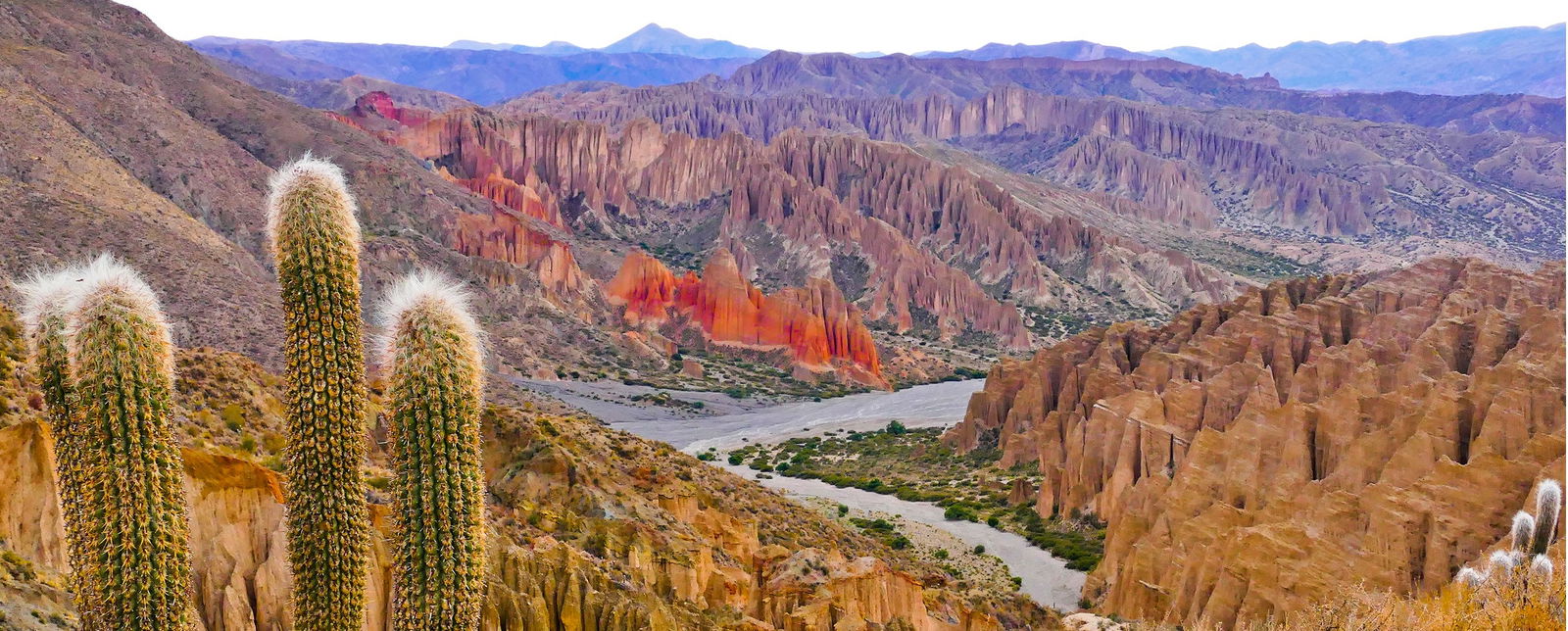


If it’s rugged landscape, red rocks and wild desert that you’re looking for, then Tupiza is the place to visit. Located in the southern part of Bolivia, the small town offers plenty of opportunity for enjoying scenery that shares a lot of similarities with the American southwest. Exotic cacti dot the countryside, rocky hills offer incredible views, and multi-colored rock formations light up with the sun. As for the town itself, it really is the quintessential Bolivian town showcasing some of the most interesting aspects of the country’s culture. Street vendors selling freshly made food, a center market with plenty to see and buy, and just the general vibe of a traditional Bolivian town that still adheres to historic ways, are what visitors can expect.
Starting in Tupiza, you can tour the iconic Uyuni Salt Flats. Depending on what season you visit, the flats themselves take on a different appearance. In the summer, the entire surface looks almost like a giant sheet of glass. While in the fall and winter months, various geometric shapes start to appear as the salt hardens.
The two-hour hike up this famed hill is definitely worth the views at the end of it. Marked by a large white cross toward the top, the walk-up Cerro de la Cruz gives you an almost bird’s eye view of the town, where you can also see the many unusual rock formations around it.
There are miles of desert landscape along with rock formations to explore in and around the region. Many go on horseback through the rugged hills and terrain. Guided tours are offered at a few different places in Tupiza as navigating on horseback is becoming increasingly popular here.

Potosí experiences winter from June to August. The city's high altitude brings cold temperatures during this season, with daytime highs ranging from the 40s to low 50s Fahrenheit. Winter is an ideal time to explore Potosí's rich colonial history, including the Casa de la Moneda (Mint House) and the San Lorenzo Church. Visitors can also venture to the nearby Cerro Rico, an iconic mountain known for its historical significance as a major silver mine during colonial times.

Spring in Potosí, from September to November, brings milder temperatures and blooming landscapes. The surrounding hills and valleys become adorned with colorful flowers, making it a beautiful time for nature walks and excursions. Spring is also a great time to explore the Potosí Cathedral, an impressive architectural gem.

The summer season in Potosí, from December to February, offers pleasant temperatures during the day, with highs in the 60s to low 70s Fahrenheit. This is a popular time for tourists to visit Potosí and explore its various cultural attractions. Summer is also a great time to venture to the nearby Tarapaya Lagoons to observe Andean flamingos and other bird species.

Fall in Potosí, from March to May, brings mild temperatures and beautiful autumn colors in the surrounding landscapes. This season is an excellent time for outdoor activities such as hiking and horseback riding. Visitors can also immerse themselves in the vibrant local culture and participate in traditional festivals celebrated in the region.